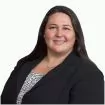At recent meetings, the NAIC's Big Data (EX) Working Group (Big Data WG) has shifted its gaze to the use of big data in life insurance underwriting. Before these meetings, the Big Data WG had focused on the impact of big data on the P&C side of the insurance industry, and had left life insurance on the periphery.
At its August 4 meeting, during the NAIC Summer National Meeting, in an effort "to understand more of the issues on the life side" the Big Data WG heard a presentation titled the Use of Data for the Underwriting of Life Products from Eric Sondergeld of LIMRA. Mr. Sondergeld noted that a LIMRA survey conducted on life insurance companies in the United States and Canada revealed that 50 percent of the responding companies are conducting some form of "automated underwriting" to replicate human underwriting decision making. He explained this trend is a result of technology and access to new data sources, including public data from social media. After the presentation, multiple regulators recognized the need to better understand how the use of data and technology is being implemented by life insurers in relation to the Big Data WG's charge to assess the needs of state regulators to appropriately monitor the marketplace and evaluate underwriting, rating, claims, and marketing practices.
The examination continued at the Big Data WG's October 5 meeting, beginning with a presentation from Bruce R. Ramge, Director of the Nebraska Department of Insurance and Chair of the Market Conduct Examination Standards WG regarding the market conduct exam standards that would apply with respect to the new underwriting processes, tools, and data points being employed in life underwriting. During his presentation, Director Ramge discussed the documents in an examiner's line of sight. Then, the regulators discussed:
- whether the standardized data call requests information about the use of the new underwriting processes, tools, and data points;
- whether the states have sufficient training to review the new underwriting processes, tools, and data points; and
- whether the Market Regulation Handbook should be reviewed and updated to address the new underwriting processes, tools, and data points.
Also during his presentation, looking through the lens of assessing unfair discrimination, Director Ramge discussed:
- Are non-traditional data sources being used?
- Is prohibited data being used?
- Is data accurate and complete?
- What algorithms are being used?
- Does the model properly segment consumers by risk?
- Are the requirements for fluid collection consistently applied?
- Are the models being used supported by experience?
- Are the models predictive as they are intended to be?
Commissioner Ommen also noted that there could be latent issues of discrimination in the data being used. He asked how companies can validate the data points, and detect discrimination occurring if the data is not accurate.
As the Big Data WG continues to put the use of big data in life insurance underwriting under a magnifying glass, carriers implementing and using new underwriting processes, tools, and data points should understand regulators are likely to seek more information about the new underwriting processes, tools, and data points. Carriers need to be prepared to respond to the regulators' peering eyes and should carefully consider their responses in order to accurately describe their new underwriting processes, tools, and data points. It is important to distinguish between an algorithm that merely assists in determining what consumer information must be reviewed by a human underwriter versus an algorithm that actually makes the underwriting decision. It is equally important to describe new underwriting processes, tools, and data points in a manner that reflects there are no unfair discrimination issues.
We will continue to monitor the activities of the Big Data WG and other NAIC initiatives regarding technology.
The content of this article is intended to provide a general guide to the subject matter. Specialist advice should be sought about your specific circumstances.


